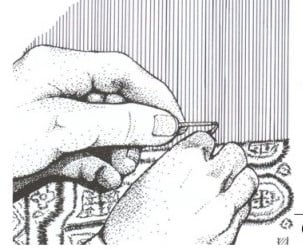“Woven by Hand, Crafted by Heart: Inside the World of Handmade Carpets”
From Thread to Treasure: The Intricate Process of Making Handmade Carpets


From Thread to Treasure: The Intricate Process of Making Handmade Carpets
Handmade carpets are more than just floor coverings—they are woven stories of heritage, craftsmanship, and patience. At Quasimi Teppich Export, each carpet we create is a result of centuries-old tradition combined with skilled hands and a deep respect for the art. Here’s a closer look at the step-by-step journey of how a handmade carpet comes to life:
1. Designing the Pattern
The process begins with a detailed design. A carpet designer draws intricate patterns on graph paper or digitally, choosing colors and motifs that reflect tradition, nature, or contemporary aesthetics. Each square represents a knot, and this “map” will guide the weavers.
2. Dyeing the Yarn
Once the design is finalized, high-quality yarn—usually wool, silk, or cotton—is selected and dyed. Using natural or synthetic dyes, artisans carefully prepare vibrant hues. The dyed yarn is then dried in sunlight to lock in the color and ensure durability.
3. Setting Up the Loom
A wooden loom is prepared for weaving. Vertical threads (warp) are tightly stretched across the loom, creating the foundation of the carpet. The weavers will interlace horizontal threads (weft) with the warp using traditional techniques.
4. Knotting by Hand
This is the most time-intensive step. Knot by knot, the weaver ties colored yarns according to the design pattern. Each knot is carefully tied, cut, and pressed down with a comb-like tool. Depending on the size and intricacy, this step can take months or even years.
5. Trimming the Pile
After knotting, the carpet is trimmed to achieve a uniform pile height. This enhances the clarity of the design and gives the carpet its final texture and feel. Skilled craftsmen use sharp scissors to shape and highlight intricate motifs.
6. Washing and Drying
The carpet is thoroughly washed to remove dust, extra dye, and to enhance the colors. It is then dried naturally under the sun to preserve its natural softness and shine. This also helps to set the colors permanently.
7. Stretching and Finishing
Once dried, the carpet is stretched to restore its shape. The edges are finished and secured with binding or fringe work. Any imperfections are repaired, and the carpet undergoes a final inspection to ensure quality.
8. Ready for the World
The finished carpet is now ready to be admired, used, and treasured. Every piece is a unique creation, rich in artistry and tradition—ready to add warmth and character to a home.
Experience the Craftsmanship Firsthand
Explore our collection of handmade carpets at www.quasimiteppich.com and discover the story woven into every rug. Each piece carries a legacy of passion, patience, and exceptional skill.

